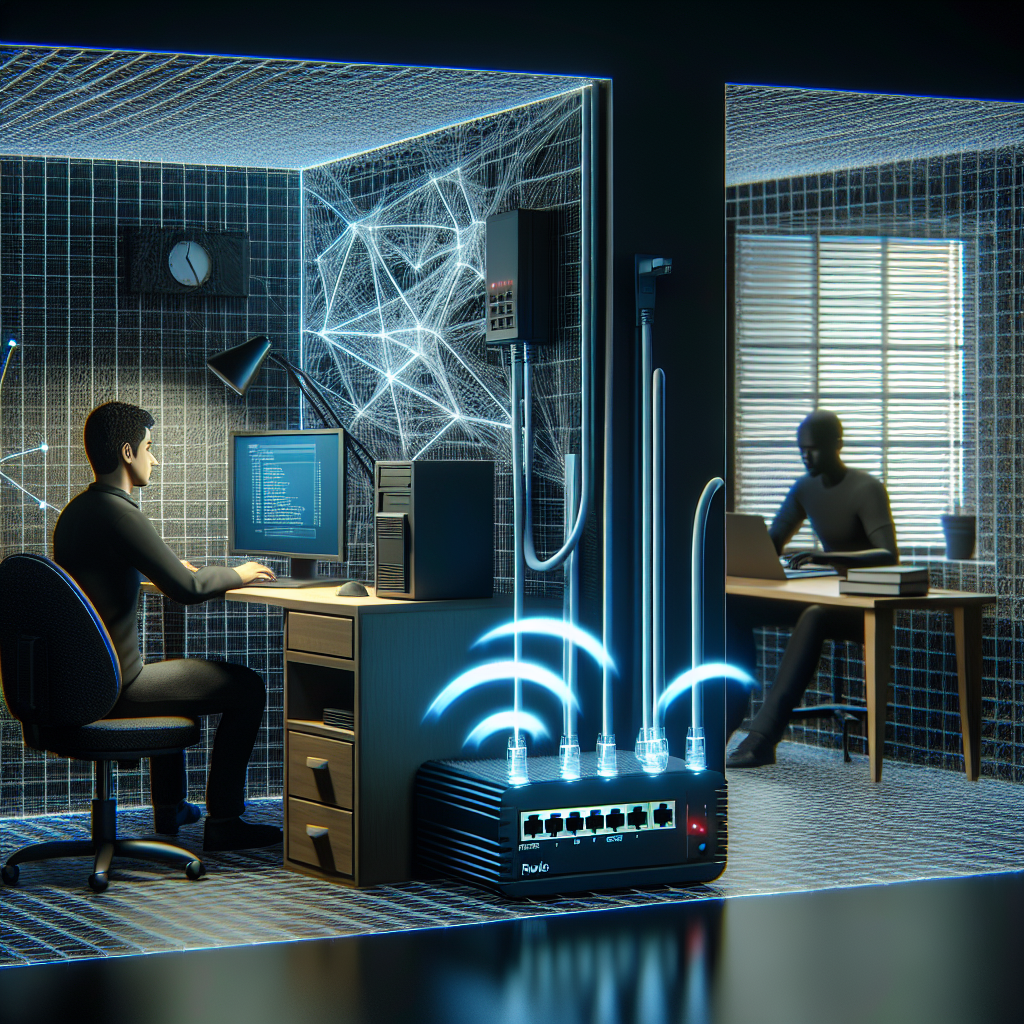Setting up a Local Area Network (LAN) can vastly improve the way devices communicate within a small geographical area, such as an office or home. This guide walks you through easy steps to get your LAN up and running, as well as how to connect your devices seamlessly.
Understanding the Basics of a Local Area Network
A Local Area Network is a network that connects computers and devices within a limited area. This setup enables resource sharing, such as files, printers, games, and internet access. Here are some components and features you should know about:
- Router: Acts as the central hub of the network.
- Switch: Distributes data to different devices on the LAN.
- Ethernet cables: Physical cables that connect devices to the network.
- Network Interface Card (NIC): A hardware component that allows a computer to connect to a network.
You can choose between wired and wireless LAN setups based on your needs. Wired networks offer more stability and security, while wireless networks offer greater flexibility.
Setting Up Your LAN
1. Gather Your Equipment
Before beginning the setup, make sure you have all the necessary hardware components:
- Router
- Switch (if you have multiple devices)
- Ethernet cables
- Network Interface Cards for each computer
- Wireless adapter (for wireless connections)
2. Connect Your Router
First, connect your modem to your router using an Ethernet cable. Plug the other end of the Ethernet cable into the router’s WAN (Wide Area Network) port.
3. Set Up the Router
Once the router is connected:
- Plug in the router and power it on.
- Access the router’s configuration page through a web browser. Usually, you can do this by typing the default IP address (often 192.168.0.1 or 192.168.1.1) into the address bar.
- Follow the on-screen instructions to complete the configuration. Set a strong password and SSID (for wireless networks).
4. Connect Devices to the Router
Now, connect your devices to the router:
- Wired Connection: Use Ethernet cables to connect each device to the router or switch.
- Wireless Connection: Search for your Wi-Fi network on each device and connect using the password you set earlier.
Connecting Devices in a LAN
1. Configuring Network Settings
Every device in your LAN needs to have the correct network settings. These are usually configured automatically using DHCP, but manual setup can be done if needed.
- Go to Network Settings on each device.
- Select ‘Obtain an IP address automatically’ to use DHCP.
- If you prefer manual settings, configure the IP address, subnet mask, and default gateway as per your network plan.
2. Sharing Resources
Once your devices are connected to the LAN, you can share resources among them:
- Enable file sharing on each device by navigating to the ‘Network and Sharing Center’ and adjusting settings to allow file and printer sharing.
- Set permissions for shared folders and devices to control who can access them.
- Access shared resources by opening the ‘Network’ folder from any device within the LAN.
3. Securing Your Local Area Network
Security is crucial for any LAN. Here are some measures to secure your network:
- Change default login credentials: When you first access the router’s settings, change the default username and password.
- Enable WPA3 encryption: This improves security for Wi-Fi networks.
- Disable WPS: Though convenient, WPS (Wi-Fi Protected Setup) can be a security risk.
- Regular software updates: Keep your router’s firmware and devices updated.
Troubleshooting Common LAN Issues
1. Connectivity Problems
If a device cannot connect to the LAN, try these steps:
- Ensure all cables are securely connected.
- Restart the router and the device.
- Check if the device’s network settings are configured correctly.
2. Slow Network Speed
For slower-than-expected network speeds:
- Limit the number of devices connected to the network.
- Check for any physical obstructions that might affect Wi-Fi signals.
- Update firmware and device drivers.
3. Resource Access Issues
If you can’t access shared resources:
- Ensure that file sharing is enabled.
- Verify that permissions are correctly set for shared folders and devices.
- Check the network discovery settings on each device.
Conclusion
Setting up a Local Area Network is an achievable task with the right know-how and equipment. Whether for a business or a home setup, a LAN can greatly improve efficiency and connectivity among your devices. Follow the steps outlined in this guide to ensure a smooth, secure, and effective LAN setup.

